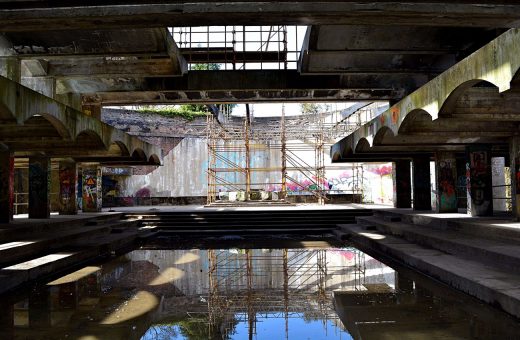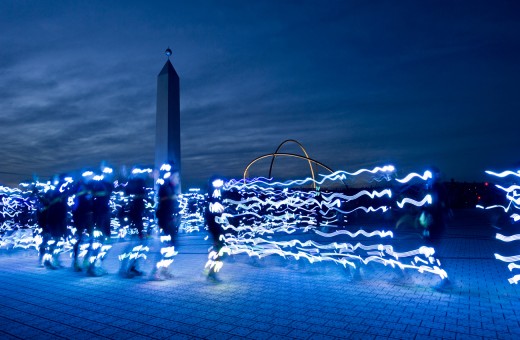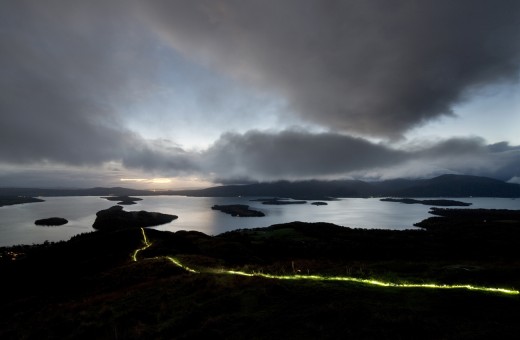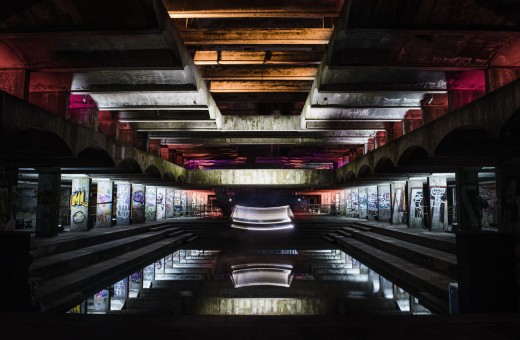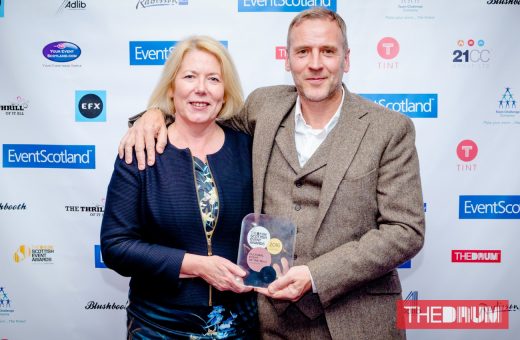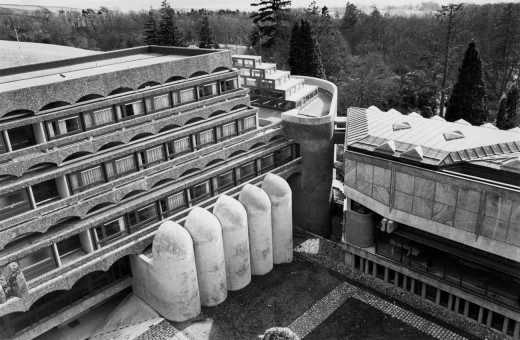June 2012: Reflections on public and private space, master plans and alternative models
21/06/2012
I wonder if the project isn’t defined by questions of public and private space, interest and influence? This seemed to be part of the core message of the evenings talks. Hayden is a wonderful guide and facilitator, Angus the consummate host, Glen was amazing as was David and Ed. We drove back over the Muir wondering what would happen if we had another day of walking and being onsite together after such talks. Having had a night to sleep on these ideas where the public realm, the politics and the process of re-purposing the relationship to the land and the iterative redevelopment of buildings was used to leverage new perception in that place. (Ed opened this up nicely we thought.) There are mutilple agencies at work, the land owners, the passive land users, the artists, the deconstructionists, the community stakeholders, the forest and its trees as well as the building itself all juxtaposed against agriculture, golfing and village life.
Reiko and I went back for another look last night walking the garden and the seminary while talking. We were struck by a sense that the oak/birch forest was semi-intact although complicated by rhododendrons and various large and some cases lovely specimens from overseas that maybe less invasive. Standing atop the building and looking east, Reiko pointed out the birch/oak mix going up the hill and some other trees of interest. On the west side, the regenerative force of nature is quite obvious (see pic in previous post). I would be curious how people feel about this image, do we ‘know enough’ to imagine it in 20 years? Would the oak come in and grow tall, would the understory thin out as a result? We wondered which specific plant communities are present?
What happens when you work with rather than against nature? Ian Mcharg and Patrick Geddes would provide historic Scottish models worth considering. The Catholic University of Valparaíso, and its ‘open city’ model may be worth considering. As would the Golden Gate National Recreational Area and its redevelopment of military sites by a range of art, culture and environmental charities.
Working in my building group I found myself in discussion with the architect Channa Daswatte who told me about the Kandalama Hotel he and Ed both worked on. Its a gorgeous thing to consider. The regenerative potential of this site and the architecture with a bit of thought, could be well suited to ‘seeding and planting’ the facade and roof with native plants this is a link to some images http://www.greenroofs.com/projects/pview.php?id=555.
Doug Larson’s work at Univ of Guelph has been a key reference point for to the greening of urban ‘cliffs and walls’ in northern climates. His research is focused on plant growth on the walls of the Niagra Gorge. I heard him speak on his ‘urban cliff hypothesis in 2000. http://www.uoguelph.ca/ib/people/faculty/larson.shtml
Thinking about all of this over coffee with Reiko, I remembered conversations about an NVA master plan. It took a half hour of digging to get to it. With only a quick read I realized that this is a good orienting piece for any discussion before going on site although it might need some interpretation as well. I also realized (as I read it) that the social discourse underway is the tentative beginning of a new discourse.
A new collective creative response would need some clarity on the scope of work and the resource available to realize hopes and dreams, that might emerge as the imagination is engaged in relationship to both opportunity and constraint.
A great day, we didn’t get home until after 9pm and were quite happily shattered in body and mind at that point, woke up to new energy.
Thanks to NVA and company, for providing much to chew on. A fine day.
Tim Collins and Reiko Goto
Originally written the day after the workshop, 10th June 2012.

